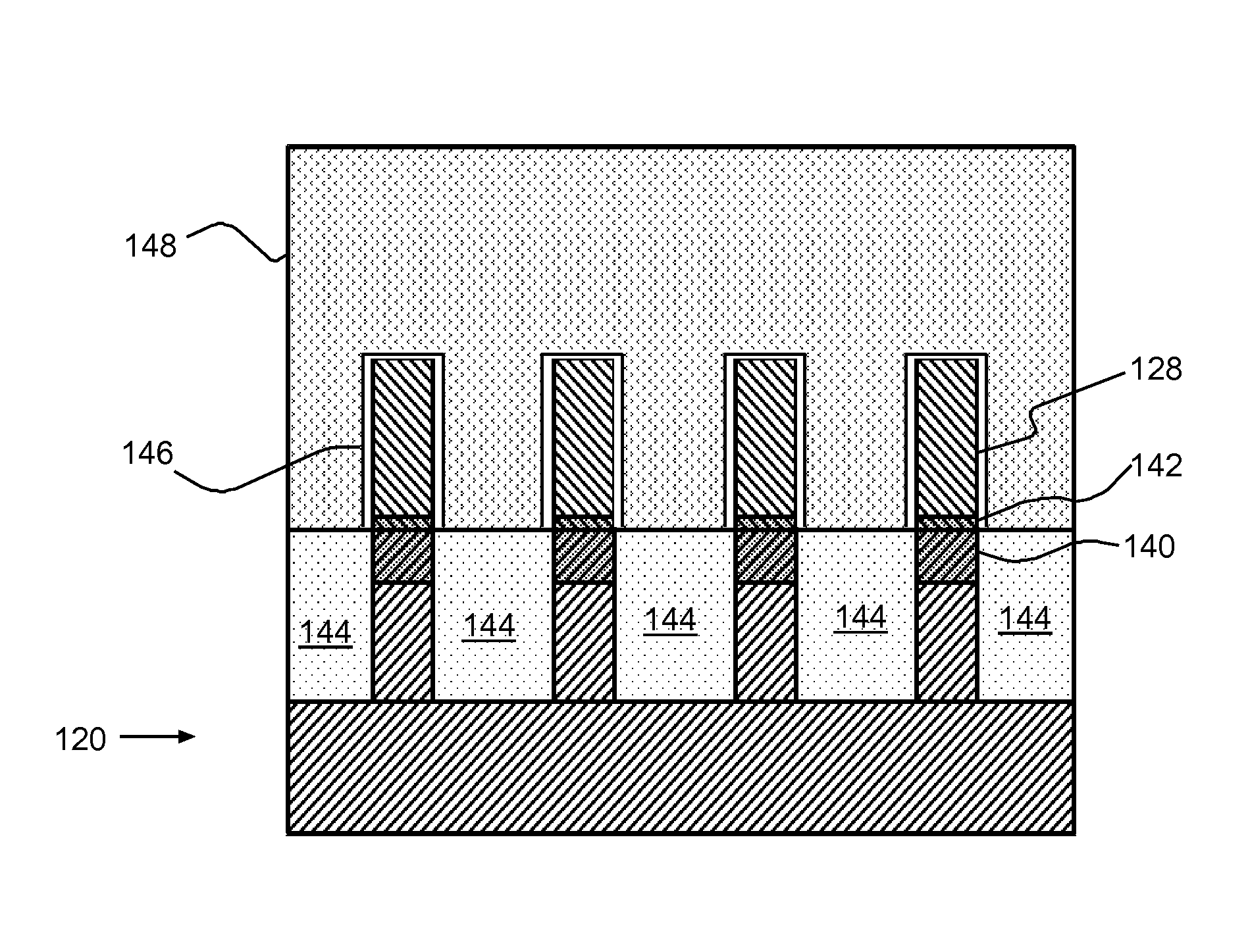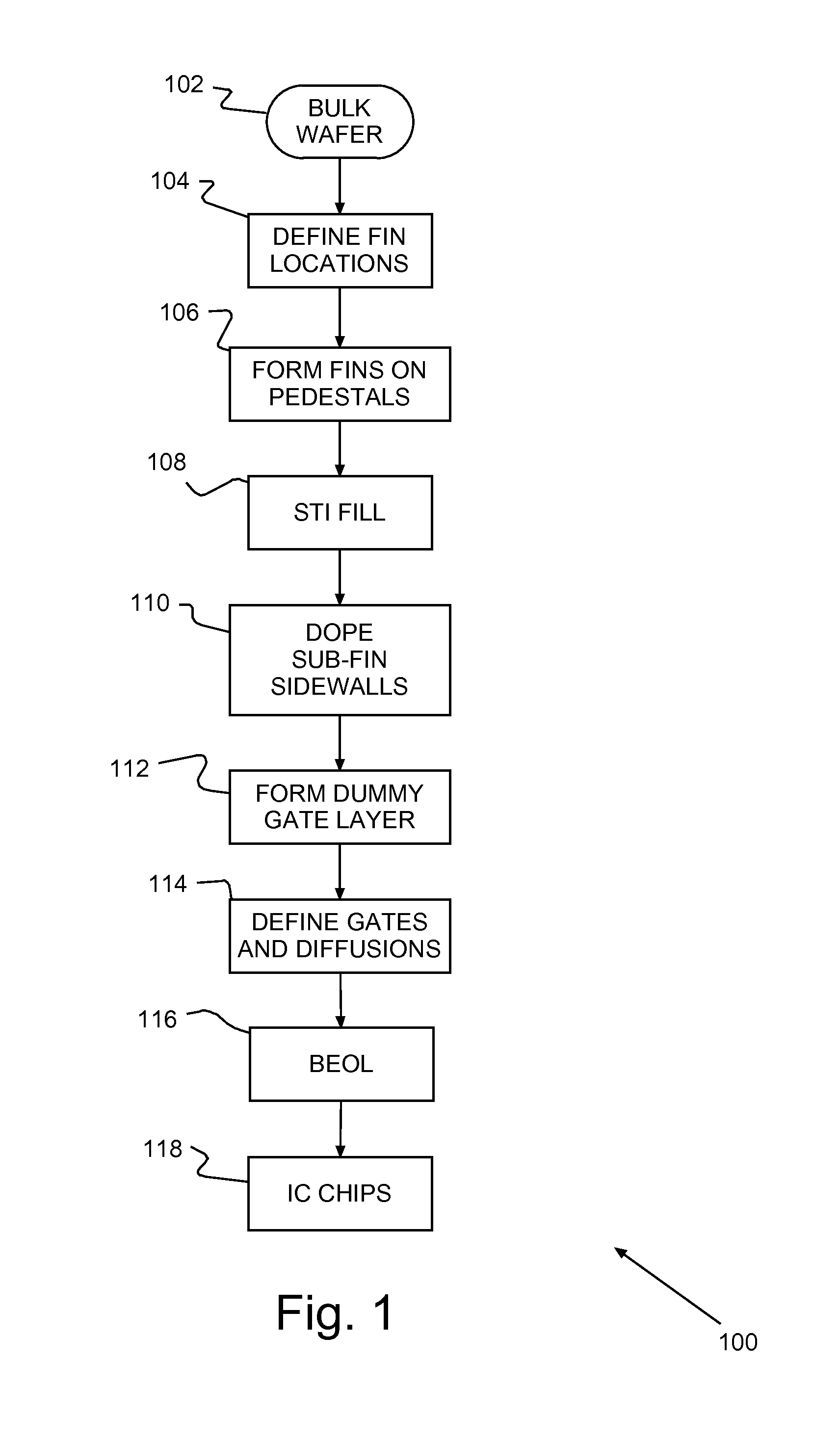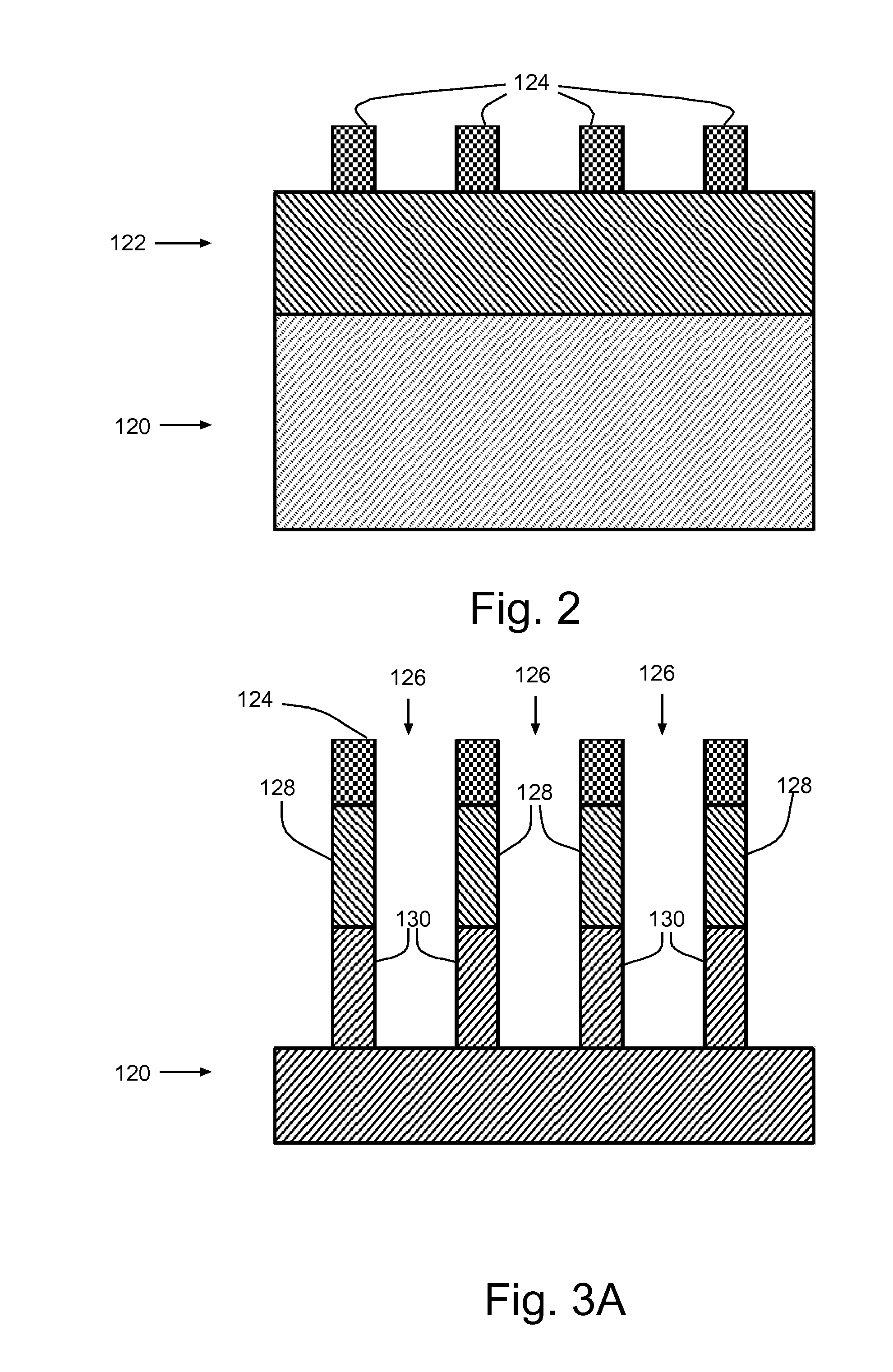Sub-fin doped bulk fin field effect transistor (finfet), integrated circuit (IC) and method of manufacture
a field effect transistor and sub-fin doped technology, applied in the direction of transistors, semiconductor devices, electrical equipment, etc., can solve the problems of reducing the performance of the device, increasing the power consumption of the chip, and increasing the complexity of the typical fet, so as to reduce the punch-through current and reduce the effect of device performance degradation
- Summary
- Abstract
- Description
- Claims
- Application Information
AI Technical Summary
Benefits of technology
Problems solved by technology
Method used
Image
Examples
Embodiment Construction
[0025]Turning now to the drawings and, more particularly, FIG. 1 shows an example of a preferred embodiment method for forming field effect transistors (FETs), e.g., in an integrated circuit (IC) and, more particularly forming FinFETs, according to the present invention. Circuit / device formation begins in step 102 with a typical bulk semiconductor wafer. In step 104 device fins are defined on a fin layer, which may be a strained layer. In step 106 fins are formed on pedestals that are formed coincidentally from the upper surface of the semiconductor wafer. Then in step 108, the space between the pedestals is filled, e.g., using a typical shallow trench isolation (STI) technique.
[0026]In step 110 the upper ends are the pedestals are doped without substantially doping the fins. Preferably, the STI is recessed to expose fin sidewalls. A sidewall spacer protects the fin sidewalls and the STI is further recessed, to expose the upper ends of the pedestals or sub-fins. Preferably, the expo...
PUM
 Login to View More
Login to View More Abstract
Description
Claims
Application Information
 Login to View More
Login to View More - R&D
- Intellectual Property
- Life Sciences
- Materials
- Tech Scout
- Unparalleled Data Quality
- Higher Quality Content
- 60% Fewer Hallucinations
Browse by: Latest US Patents, China's latest patents, Technical Efficacy Thesaurus, Application Domain, Technology Topic, Popular Technical Reports.
© 2025 PatSnap. All rights reserved.Legal|Privacy policy|Modern Slavery Act Transparency Statement|Sitemap|About US| Contact US: help@patsnap.com



